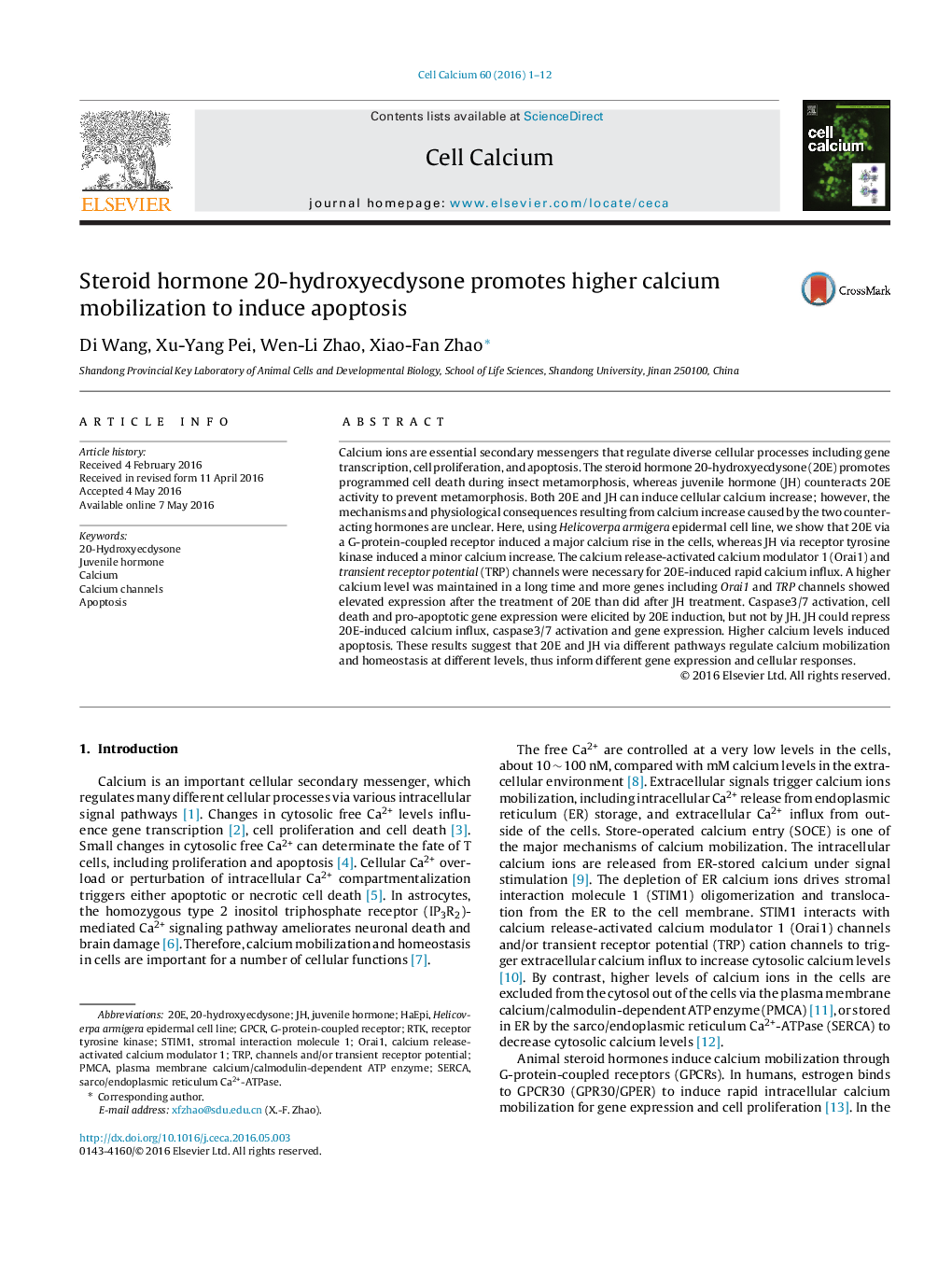| Article ID | Journal | Published Year | Pages | File Type |
|---|---|---|---|---|
| 2165842 | Cell Calcium | 2016 | 12 Pages |
•20E induces calcium mobilization via GPCRs while JH acts via RTKs.•20E maintains Ca2+ at higher levels than JH III to induce apoptosis.•20E upregulates Orai1 and TRPs expression to allow more calcium ions influx.•Calcium levels determine cell fate.
Calcium ions are essential secondary messengers that regulate diverse cellular processes including gene transcription, cell proliferation, and apoptosis. The steroid hormone 20-hydroxyecdysone (20E) promotes programmed cell death during insect metamorphosis, whereas juvenile hormone (JH) counteracts 20E activity to prevent metamorphosis. Both 20E and JH can induce cellular calcium increase; however, the mechanisms and physiological consequences resulting from calcium increase caused by the two counteracting hormones are unclear. Here, using Helicoverpa armigera epidermal cell line, we show that 20E via a G-protein-coupled receptor induced a major calcium rise in the cells, whereas JH via receptor tyrosine kinase induced a minor calcium increase. The calcium release-activated calcium modulator 1 (Orai1) and transient receptor potential (TRP) channels were necessary for 20E-induced rapid calcium influx. A higher calcium level was maintained in a long time and more genes including Orai1 and TRP channels showed elevated expression after the treatment of 20E than did after JH treatment. Caspase3/7 activation, cell death and pro-apoptotic gene expression were elicited by 20E induction, but not by JH. JH could repress 20E-induced calcium influx, caspase3/7 activation and gene expression. Higher calcium levels induced apoptosis. These results suggest that 20E and JH via different pathways regulate calcium mobilization and homeostasis at different levels, thus inform different gene expression and cellular responses.
Graphical abstractFigure optionsDownload full-size imageDownload as PowerPoint slide
